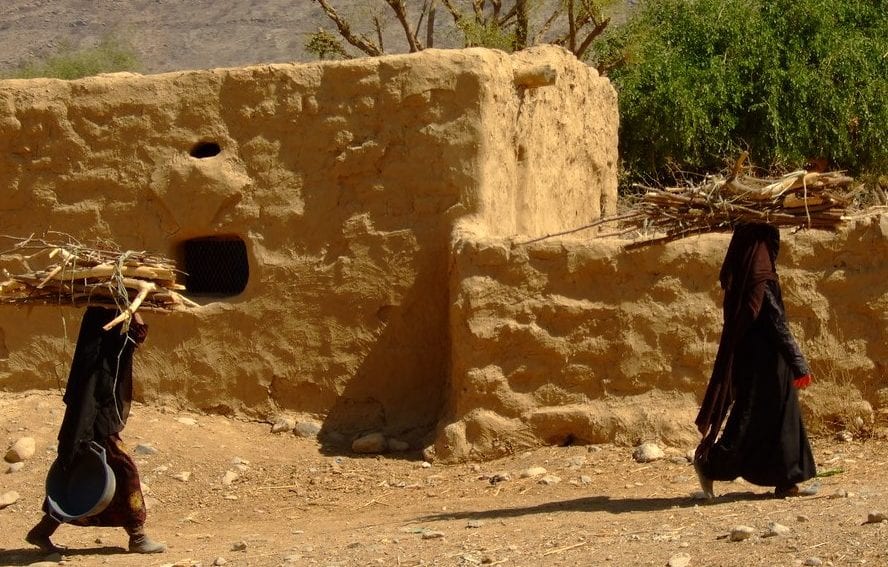09/05/19
Yemen’s forests another casualty of war amid fuel crisis

By: Adel Aldaghbashy
Send to a friend
The details you provide on this page will not be used to send unsolicited email, and will not be sold to a 3rd party. See privacy policy.
Now environment officials are warning that millions of trees are likely being lost as a result of excessive firewood gathering by communities facing an acute shortage of natural gas.
Abdullah Abulfotouh, director of biodiversity and natural sanctuaries at the country’s Environment Protection Authority, says: “The people’s and local communities’ need for fuel has caused unprecedented demand on fuel firewood and charcoal, amid the huge fuel crisis caused by the current war”.
“Excessive firewood gathering is getting worse amid little official effort to lay foundations for sustainable management of natural resources,”
Abdullah Abulfotouh, Yemeni Environment Protection Authority
An increase in the price of oil derivatives and shortage of gas have led many households to resort to using firewood as a domestic fuel, Abulfotouh explains.
He says bakeries have also shifted to using firewood instead of natural gas and kerosene, adding to the high demand for the commodity.
This has put pressure on vegetation cover and trees in urban areas, as well as mangrove forests on the Red Sea coast and Kamaran Island nature sanctuary in Al-Hudaydah governorate, authorities say.
The phenomenon has hit Socotra Island, well known for its unique plant diversity, and the gardens of Sanaa University in the capital, where trees have been sold for huge sums of money.
The dean of the faculty of arts at Sanaa University, Abdel-Malek Issa told SciDev.Net: “Thirty-seven trees have been cut from the yard of the faculty and sold in an official tender for more than 2 million Yemeni Rial (US$ 8,000)”.
He said some ageing trees had fallen on buildings, injuring students, prompting the administration to cut down others to prevent further accidents.
More than 860,000 trees a year are being cut down to supply Sanaa’s 722 bakeries alone, which burn around 17,500 tonnes of firewood each year, Abulfotouh tells SciDev.Net, citing a government survey.
He adds that this has destroyed some 780 hectares of vegetation and warns that if similar surveys were conducted in other governorates suffering fuel crises, “we would find millions of trees subjected to excessive firewood-gathering”.
A field study by the Environment Protection Authority estimates that Yemen’s forests cover about 1.5 million hectares, while rangelands cover around 22.6 million hectares. Together they represent a significant resource for meeting the nutritional needs of local communities and livestock.
However, mismanagement and unsystematic usage have led to a dramatic decrease of these resources. And the desperate need for firewood has sent prices soaring, making selling it a lucrative business.
Mohammed Al-Ghaily who stands in one of Sanaa’s markets selling bundles of firewood, tells SciDev.Net: “I sell around four tonnes in three to five days only, for about 780,000 Yemeni Rial (about US$ 3,000), after which I go to get more from Sardoud valley or from the valleys of Hija or Tehama governorates, where each load costs me about 250,000 Yemeni Rial (about US$ 1,000)”.
Officials from the Environment Protection Authority say the availability of modern tools like chainsaws has facilitated the felling of trees and wild bushes, with a disregard for environmental, social and economic consequences.
A study by the authority found that excessive firewood gathering is leading to a rapid deterioration of the country’s forests and negatively impacting the environment and local communities.
Soil in deforested areas has become vulnerable to wind and water erosion, leading in turn to a decrease in groundwater levels and heightened risk of floods, the study showed.
Excessive firewood gathering also affects wildlife and environmental balance, because of the migration of some birds and animals after losing their natural habitat.
Abulfotouh says authorities have been apathetic to these environmental risks, adding: “Excessive firewood gathering is getting worse amid little official effort to lay foundations for sustainable management of natural resources”.He believes comprehensive studies are needed for the worst affected regions, to inform damage limitation interventions and reforest affected areas.
Meeting the needs of the population for natural gas and oil derivatives at suitable prices is also crucial, he says, to put an end to the demand for firewood and restore vegetation cover and environmental balance.
This piece was produced by SciDev.Net’s Middle East & North Africa desk













